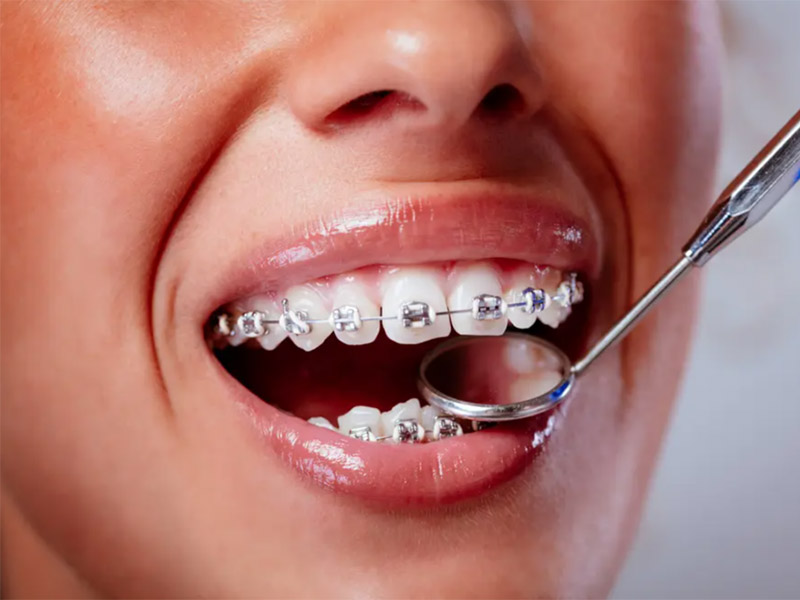May 22, 2024
As you navigate the journey of improving your speech, you may find that proper orthodontic treatment can be a game-changer. Whether you struggle with a lisp, mumbling, or difficulty pronouncing certain sounds, misaligned teeth and jaws can be the root cause of your speech problems.
Good news! Traditional braces, clear aligners, and behind-the-teeth braces can help with speech challenges and boost your confidence. By understanding how these orthodontic solutions work, you can take the first step towards achieving clearer, more confident speech.
In this article, we’ll explore how different types of braces and aligners can help you overcome speech problems and improve communication.
Speech Problems Caused by Bite Misalignment
Your teeth and jaws play an important role in your ability to speak clearly. When your bite is misaligned, it can lead to a variety of speech difficulties.
For example, if your upper and lower teeth don’t fit together properly, you may develop a lisp, where you have trouble pronouncing “s” and “z” sounds. This can make your speech sound unclear and difficult for others to understand.
Likewise, if your jaws are not properly aligned, you may find it challenging to move your mouth and tongue freely. This can result in mumbling or muffled speech, where your words don’t come out as crisp and articulate as you’d like.
Bite misalignment can also impact your ability to pronounce certain consonant sounds, such as “th,” “r,” and “l.” This can make it harder for you to communicate effectively and express yourself with confidence.
Traditional Braces for Speech Improvement
If you’re having trouble speaking clearly because your teeth are not lined up properly, traditional braces may be able to help. These tried-and-true orthodontic devices work by slowly moving your teeth into the right positions, which can improve your bite and make it easier for you to speak clearly.
One of the great things about traditional braces is that they can fix all kinds of bite problems. From crowded teeth to overbites and underbites. As your teeth move into their proper alignment, you’ll notice that your speech becomes much clearer.
The process of getting traditional braces is well-known, and our orthodontist can give you a good idea of how long the treatment will take. Many people who have had traditional braces say that they feel more confident and self-assured when they speak.
Behind-the-Teeth Braces for Discreet Speech Correction
For those that are more concerned about aesthetics, you can try lingual braces for a more hidden option to straighten your teeth. These braces are placed on the back of your teeth, making them virtually invisible to others.
One of the key benefits of lingual braces is that they can still effectively correct your bite alignment and address any speech problems you may be experiencing. By shifting your teeth into their proper positions, lingual braces can help you overcome issues like lisping, mumbling, or difficulty pronouncing certain sounds.
The placement of lingual braces behind your teeth also means that they won’t interfere with the movement of your tongue and lips as you speak. This can make it easier for you to adapt to the braces and continue speaking clearly throughout your treatment.
Compared to traditional braces or even clear aligners, lingual braces offer a more subtle and inconspicuous way to improve your speech. This can be especially beneficial if you’re a teenager or young adult who wants to maintain your confidence and self-esteem during the orthodontic process.
Maintaining Speech Clarity During and After Orthodontic Treatment
As you go through your orthodontic treatment, whether it’s with traditional braces, aligners, or lingual braces, it’s important to stay diligent in maintaining your speech clarity. This means being consistent with wearing your appliances as directed and practicing good oral hygiene.
During the treatment process, you may need to adjust to speaking with your braces or aligners in place. Our orthodontists can provide you with exercises and techniques to help you adapt and continue speaking clearly.
Practicing these exercises regularly can help you develop the muscle memory and coordination needed to maintain your speech improvements.
Even after your treatment is complete and your braces or aligners have been removed, it’s important to keep up with your speech-enhancing practices. This could involve continued exercises and being mindful of tongue and lip movements when speaking.
By staying committed to these maintenance techniques, you can ensure that the hard work you’ve put into correcting your bite alignment and improving your speech doesn’t go to waste. Your clear, confident communication skills will become a lasting benefit that you can enjoy for years to come.
Exercises to Improve Speech Clarity During Orthodontic Treatment
One helpful exercise is to read out loud, either to yourself or to a friend or family member. This can get your mouth used to forming words and sounds with your new orthodontic appliances in place. You can start with simple sentences and gradually work your way up to more complex passages.
Another exercise is to focus on pronouncing specific sounds that you’re having trouble with, like “s”, “z”, “th”, “r”, and “l”. Our orthodontists or a speech therapist can give you targeted exercises to practice these tricky sounds. Repeating tongue twisters or saying words that contain these sounds can greatly help.
Overcome Speech Challenges With SouthShore Orthodontics
By correcting your bite and improving your oral function, these orthodontic treatments can help you speak more clearly and confidently.
If you’re struggling with speech problems such as a lisp, mumbling, or difficulty pronouncing certain sounds, our team at SouthShore Orthodontics is here to help. We have years of experience providing high-quality, personalized orthodontic care to patients of all ages.
If you’re ready to take the first step towards clearer, more confident communication, we encourage you to drop by our Riverviewoffice or call to schedule a consultation.

